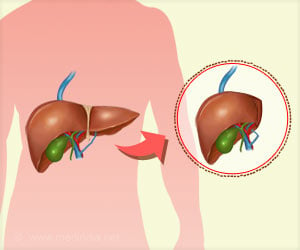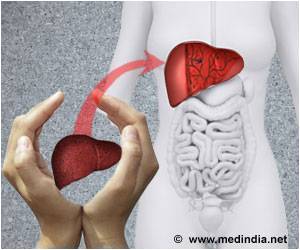Living-donor liver transplant (LDLT) may be a better option compared to deceased donor liver transplant (DDLT) with lesser complications and better survival of recipients and overall patient outcomes.
Highlights:
- Living-donor liver transplant (LDLT) may offer better patient outcomes such as improved survival and fewer complications as well as lesser cost compared to deceased donor liver transplant (DDLT)
- Currently, patients with liver failure are placed on a waiting list to receive a suitably matching deceased donor liver. Sadly, about 25% die and others develop more complications during the waiting period, making the patient outcome more unfavorable even if they receive a transplant
- Only 5% of all liver transplants (about 8000 annually) in the US are from live donors and bridging this gap could mean a difference between life and death for several patients with liver failure and their families
According to Abhinav Humar, M.D., chief of transplant services at UPMC, lead author of the study and clinical director of the transplantation institute, “Living-donor liver transplants, in tandem with deceased-donor liver transplants, represents an opportunity to significantly decrease the risk of wait-list mortality, and gives us the ability to transplant a person sooner.”
Read More..
Comparing Outcomes of Live Vs. Deceased Donor Liver Transplant
The current retrospective study analyzed 245 adult live donor liver transplants and 592 deceased-donor liver transplants done at the UPMC over the last 10 years to compare survival rates and other patient outcomes such as complications, costs, recovery duration and utilization of resources. The patients were closely monitored for at least two years following transplant. UPMC has the biggest live-donor liver transplant program in the US.The key findings of the study included
- Three-year patient survival rates in live-donor liver transplant recipients were 86% versus 80% for deceased donor liver recipients
- Recipients of living-donor liver transplant overall had about a 5% improved survival compared to recipients of liver from deceased-donor
- Recipients of live donor liver transplant had a hospital stay of 11 days in comparison to 13 days for recipients of deceased donor liver transplant
- Living-liver donor recipients were less likely to need intraoperative blood transfusion compared to deceased donor recipients (53% compared to 78%) and less likely to need post-transplant dialysis (1.6% and 7.4% respectively)
- Hospital expenses for living-donor liver transplants were found to be 29.5% lesser compared to deceased donor recipients
- No mortalities were observed, and the overall complication rate in living donors was found to be 20%
“Living-donor liver transplant should be considered the first and best option for most patients with liver disease,” Humar said. “It is not only an option for those on the waiting list but could perhaps offset the fact that not everyone who may benefit from transplant qualifies to receive a deceased-donor transplant based on today’s current rules of allocation.”
Success Story of Live Donor Liver Transplants in UPMC
UPMC has the distinction of leading the country in live donor liver transplants in the last two years and is the only center in the U.S. to have done more live than deceased donor liver transplants.- In 2018, living-donor transplants done in UPMC was 54% compared to 4%, which is the US national average
- UPMC’s transplant rate also rose from 45 out of every 100 persons on the program’s waiting list in 2015 to almost 88 in 2018
Living-donor Liver Transplant
In a living-donor liver transplant, a portion of the liver from a healthy living donor is removed surgically and transplanted into a recipient after surgically removing his diseased liver. The donor’s liver regenerates, i.e., grows back to its original size within a short period, latest by eight weeks. This allows more persons to become liver donors.Donor eligibility criteria
- 18-60 years of age
- Must not be pregnant
- Should not be obese or overweight
- No underlying medical conditions or mental illness.
- Should be a non-smoker or stop smoking for at least 6 weeks prior to surgery
- Should agree to follow doctor’s instructions prior to and after surgery
- Should be same blood type as the recipient, but need not be blood relative
It is suggested that the decision to use a live or deceased donor should depend on the patient’s status, availability of suitable match, and level of expertise of the center performing the procedure.
In summary, live donor liver transplants could be a way forward to improve survival and offer a ray of hope and make a huge difference for the hundreds of families who have a patient needing a liver transplant.
References:
- New Study Highlights Advantages of Living-Liver Donation - (https://www.upmc.com/media/news/071219-ldlt-ddlt-paper)
- Living Donor Liver Transplant - (https://transplant.surgery.ucsf.edu/conditions--procedures/living-donor-liver-transplant.aspx)
Source-Medindia
















